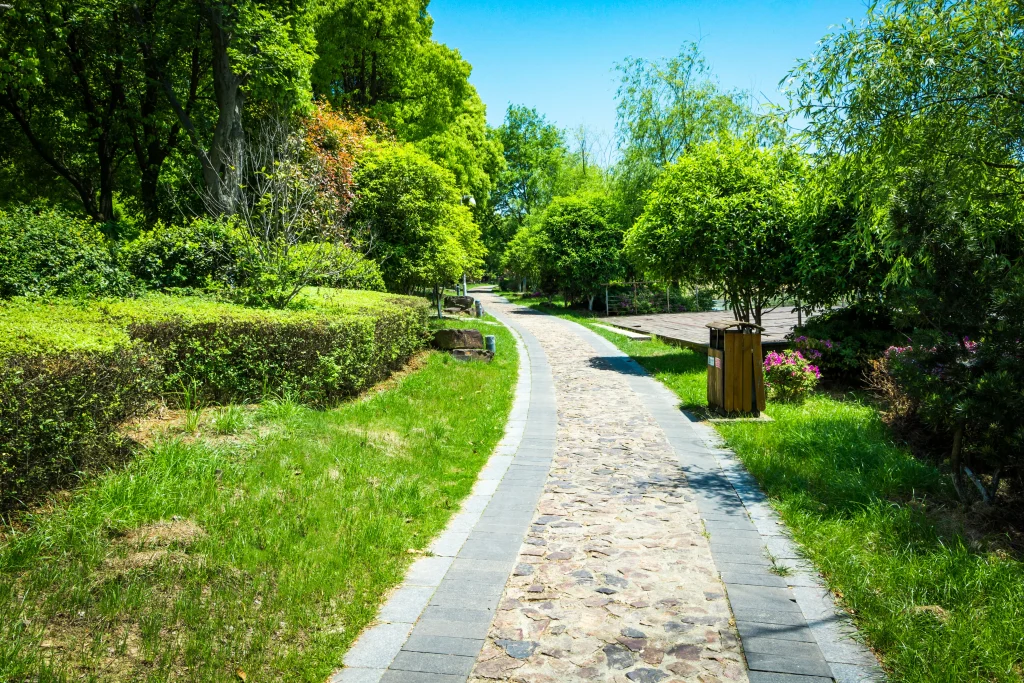River rock flower beds are transforming Denver landscapes, offering homeowners a perfect blend of natural beauty and practical functionality.
If you’re tired of replacing mulch every spring or struggling with Colorado’s unpredictable weather, river rocks provide a durable, low-maintenance solution that thrives in our unique Front Range climate.
This comprehensive guide presents 15 inspiring river rock flower bed ideas specifically designed for Denver homeowners, complete with plant recommendations and maintenance tips that work in our challenging high-altitude environment.
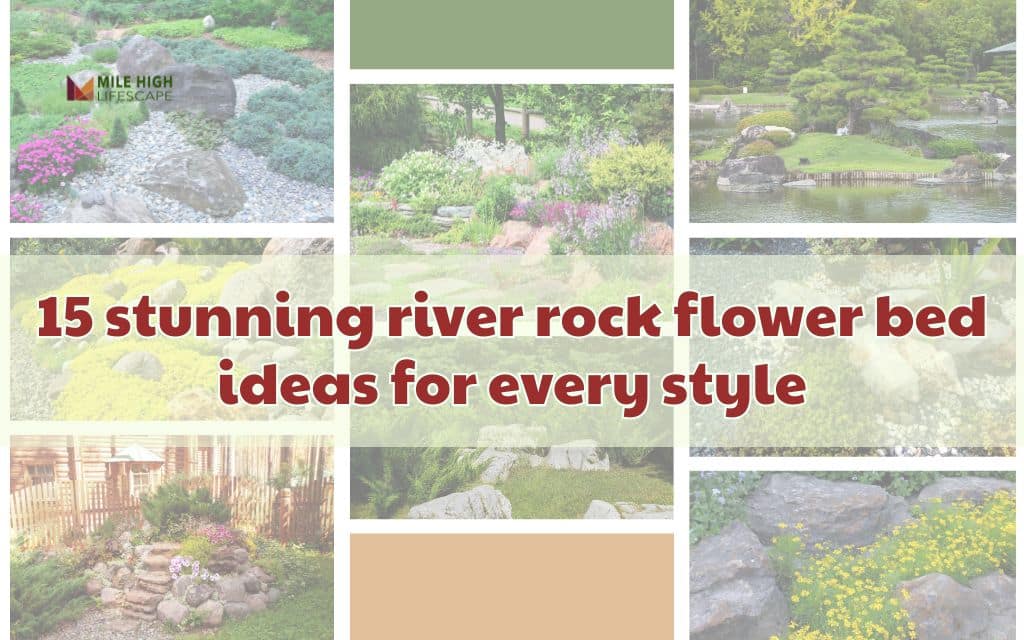
Why choose river rock flower beds in Denver?
Perfect for Colorado’s climate
Denver’s extreme weather conditions make river rock flower beds an ideal landscaping choice.
The thermal mass of river rocks helps regulate soil temperature, protecting plant roots during harsh Colorado winters while preventing moisture loss during our dry, windy summers. River rocks excel at preventing soil erosion, a common problem on Denver’s sloped lots.
Unlike organic materials that decompose or blow away, river rocks stay put year after year, making them perfect for xeriscaping and water conservation goals that align with Denver’s ongoing drought concerns.
Low-maintenance alternative to mulch
Traditional mulch requires annual replacement, adding up to costs and labor over time. River rocks eliminate this. They don’t fade, decompose, or require seasonal refreshing like wood chips or bark mulch.
For busy homeowners, this translates to more time enjoying your garden instead of maintaining it. River rocks also perform exceptionally well in our windy conditions, where lighter mulch materials often blow into neighboring yards or onto driveways.
Adds curb appeal & longevity
River rock flower beds create stunning visual appeal that complements both modern traditional homes. The natural stone textures and colors hold their appearance year-round, unlike mulch that fades and deteriorates.
This beauty factor increases property values and enhances outdoor living spaces, making your investment worthwhile.
15 stunning river rock flower bed ideas for every style
1. Classic border bed
Create timeless curb appeal with neat edging using gray or tan river rocks. This traditional approach works perfectly along sidewalks or driveways, providing clean lines that define your landscape. Use 2 – 3 inch river rocks for optimal visual impact and pair with drought-tolerant perennials like purple coneflower and black-eyed Susan.
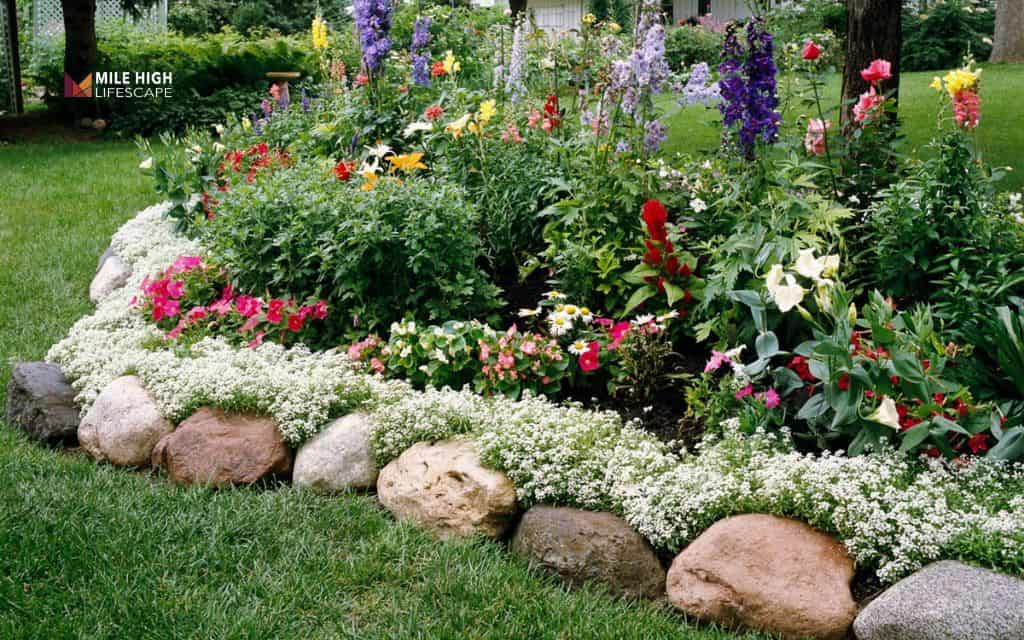
2. Rock river stream design
Design a dry “riverbed” that naturally guides rainwater runoff. This functional beauty helps manage rainfall, preventing erosion while creating a naturalistic focal point. Incorporate varying sizes of river rocks, from small pebbles to larger stones, mimicking actual riverbeds found in Colorado’s mountains.
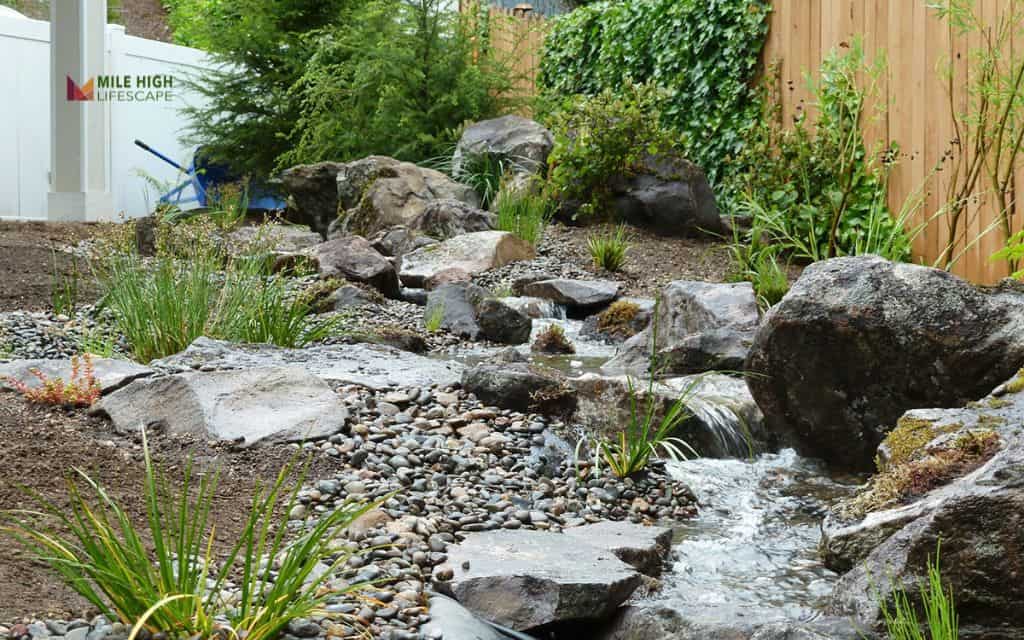
3. Desert-inspired xeriscape
Combine large boulder accents with smaller river rocks, native grasses, and succulents for a water-wise landscape that thrives in semi-arid climate. Plant blue grama grass, yucca, and prickly pear cactus among the rocks for authentic Colorado high desert appeal.
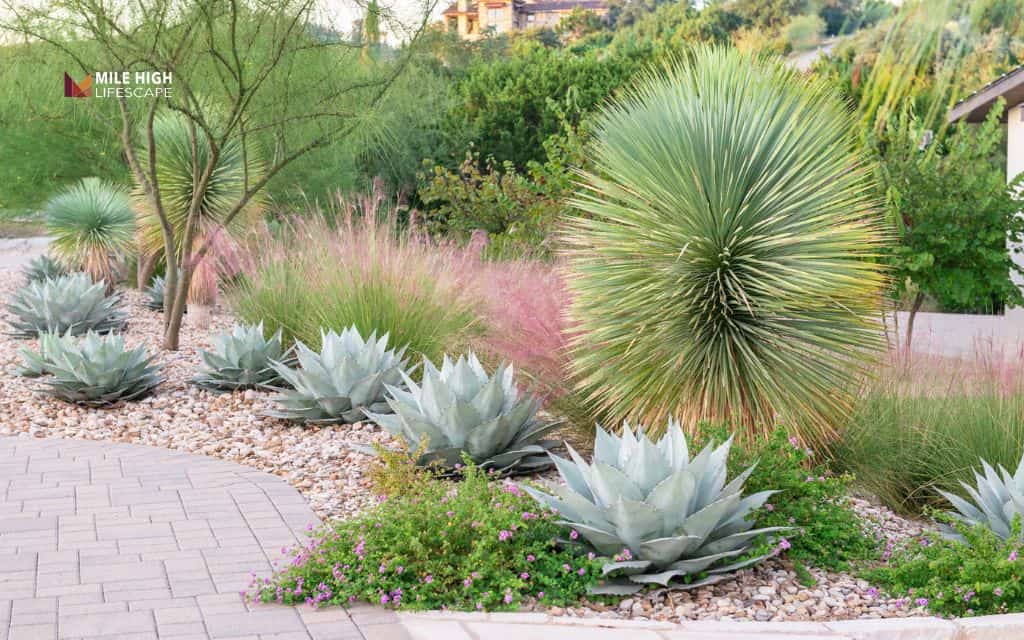
4. Colorful perennial bed with river rock base
Balance vibrant flowering plants with neutral river rock backgrounds. Choose perennials that bloom at different times, such as spring crocuses, summer bee balm, and fall asters, ensuring continuous interest. This design showcases seasonal color and also maintains year-round structure.
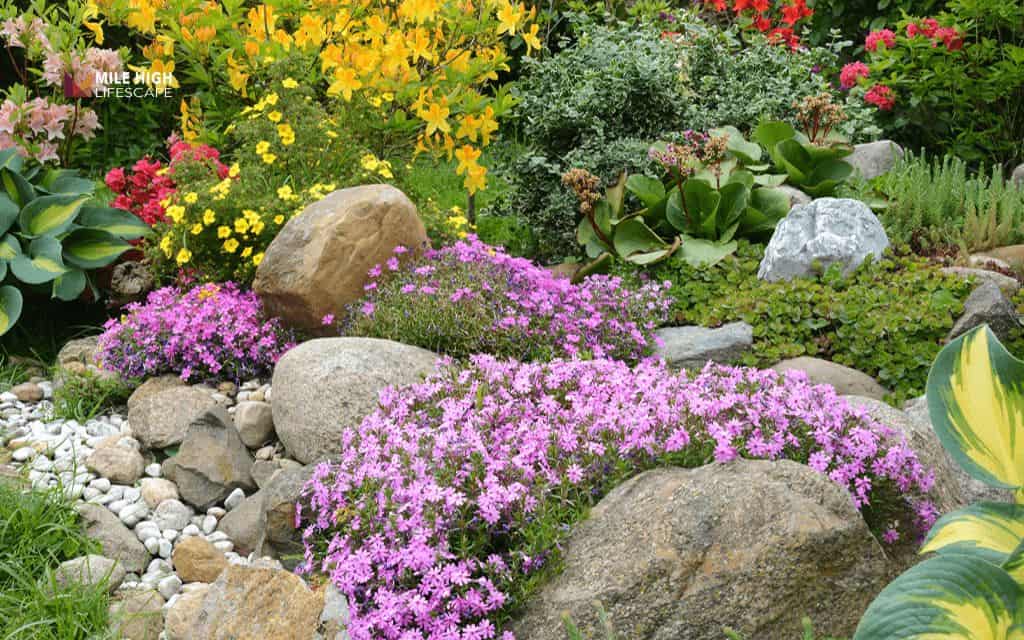
5. Modern minimalist design
Use smooth black or white river pebbles with architectural plants like ornamental grasses and sculptural agaves. This contemporary approach complements modern home designs and requires minimal water and maintenance.
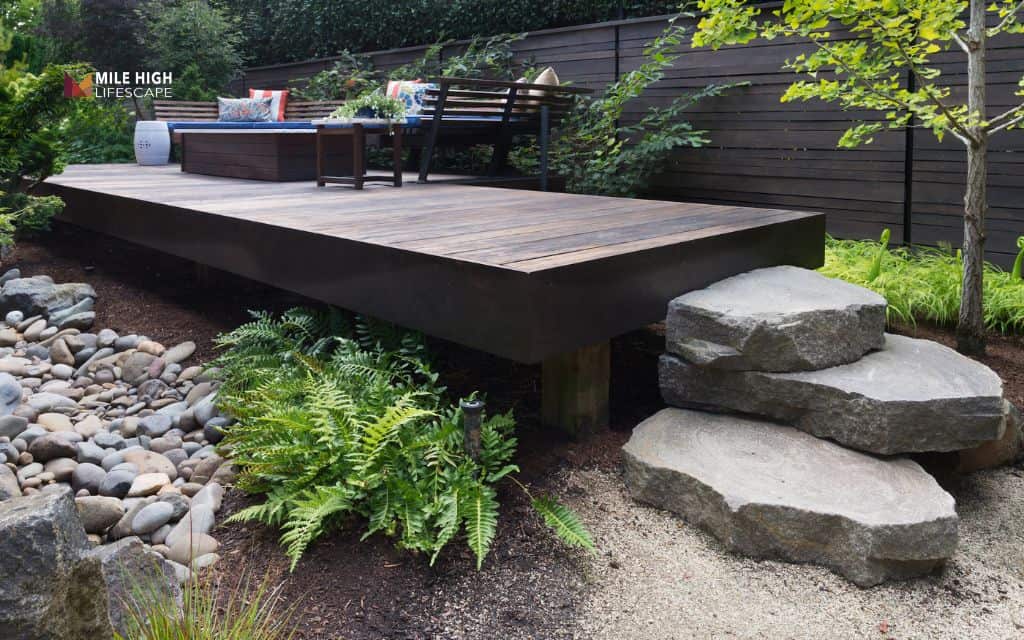
6. Sloped yard erosion control bed
Combine larger boulders with medium-sized river rocks to stabilize Denver’s hilly terrain. This practical solution prevents soil loss during spring snowmelt and summer thunderstorms and creates attractive terraced planting areas.
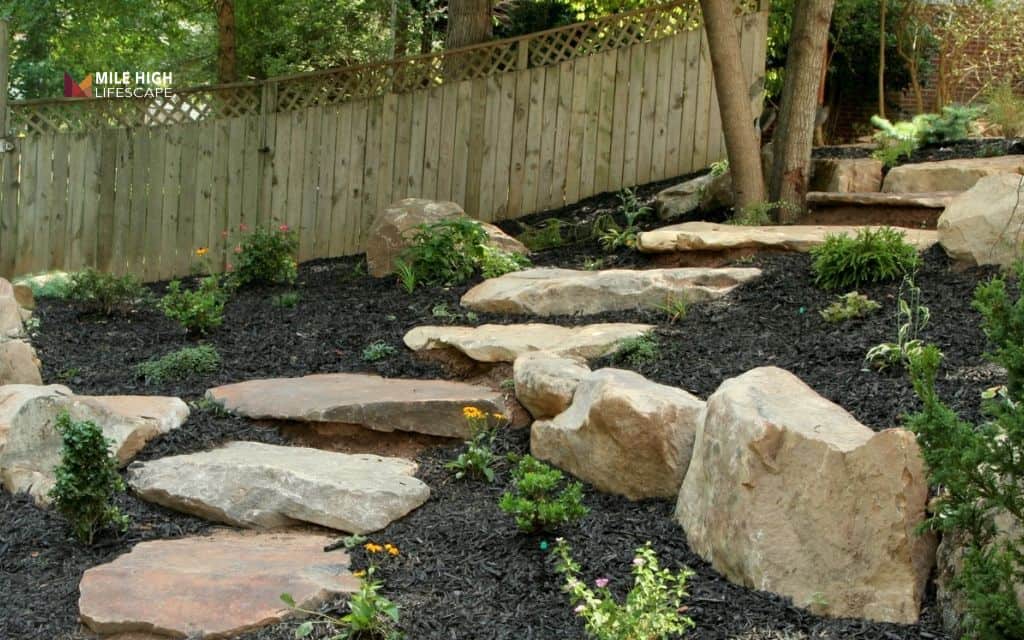
7. Raised rock garden bed
Elevate your planting area above Denver’s notorious clay soil, improving drainage and root health. Frame raised beds with decorative stones and fill with river rocks mixed with quality soil amendments for optimal plant performance.
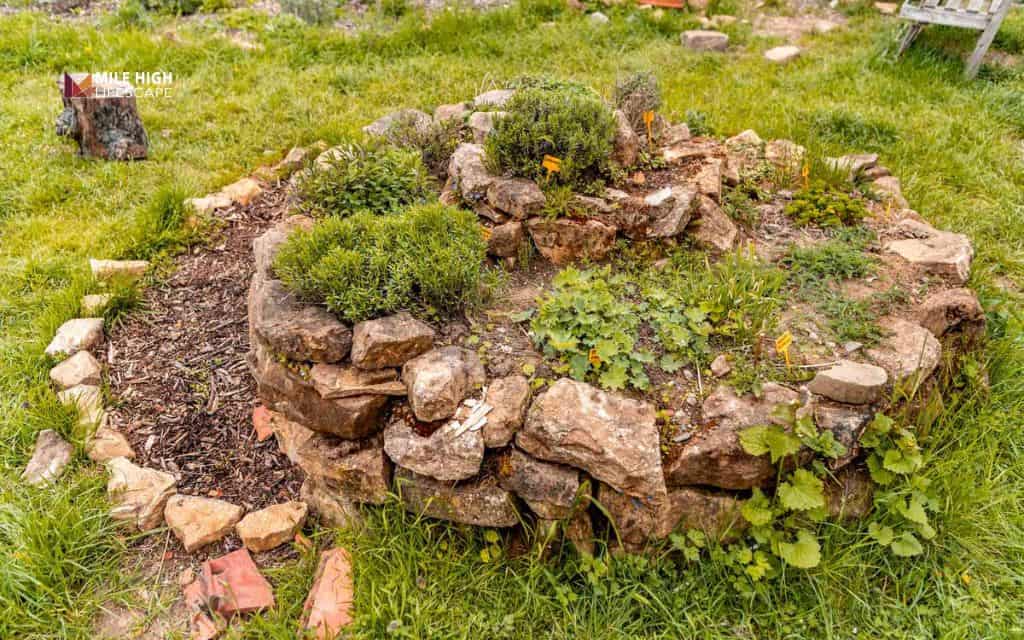
8. Cottage-style mixed rock and mulch bed
Blend river rocks with organic mulch for a softer, layered appearance. Use rocks for pathways and plant borders while maintaining mulch around moisture-loving plants for the best of both worlds.
See related: 10 creative rock and mulch landscape ideas to replace traditional mulch in Denver
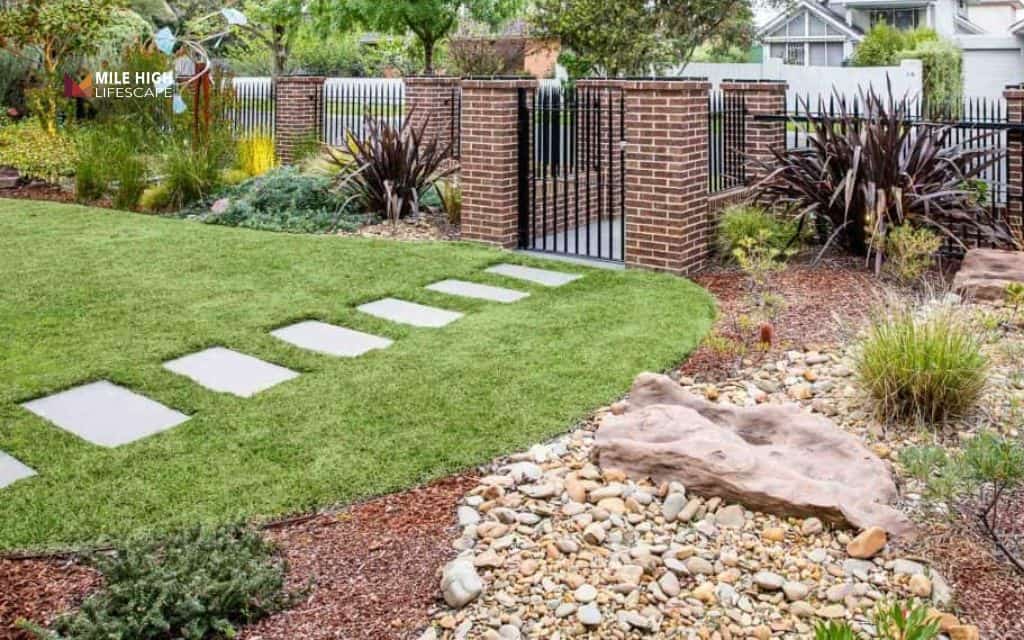
9. Japanese zen-inspired flower bed
Create tranquil spaces using river rocks as backdrops for Japanese maples, ornamental grasses, and mossy ground covers. This design philosophy emphasizes simplicity and natural harmony, perfect for meditation gardens or quiet retreat areas.
See related: 23 zen rock garden ideas to create your backyard meditation oasis
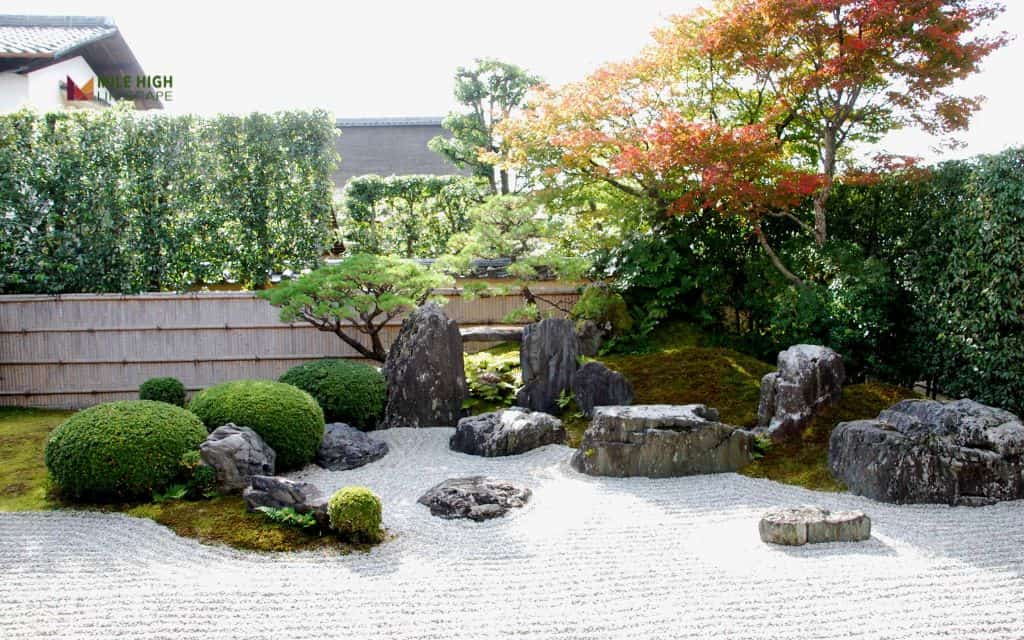
10. Driveway or pathway border bed
Frame hardscapes with river rock borders that provide structure and visual contrast. This approach softens harsh concrete or asphalt edges while preventing grass encroachment and reducing trimming needs.
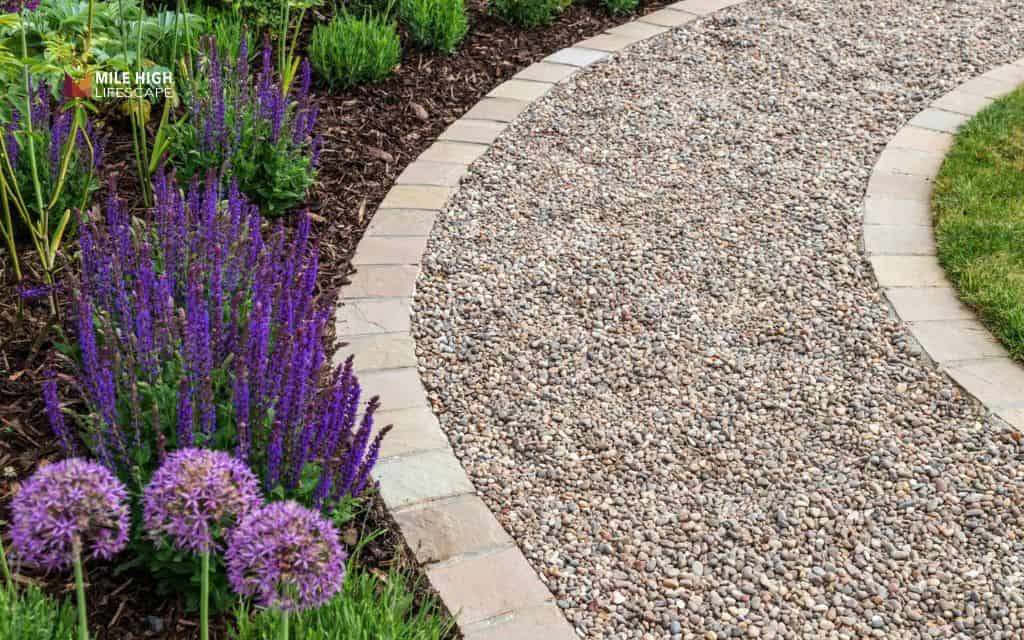
11. Evergreen & rock combo bed
Pair river rocks with evergreen shrubs like juniper, pine, and spruce for year-round greenery without bare winter spots. This combination provides constant visual interest and works exceptionally well in Denver’s variable climate.
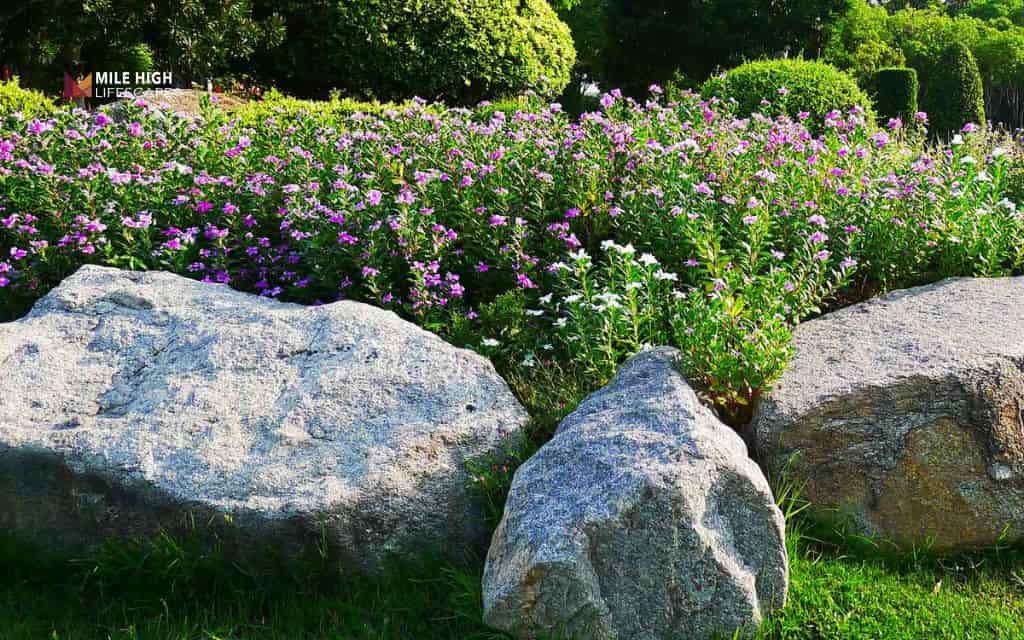
12. Pollinator-friendly rock bed
Surround bee-loving native flowers with river rocks to create habitat for beneficial insects. Plant bee balm, native sunflowers, and asters among the stones to support Denver’s important pollinator populations.
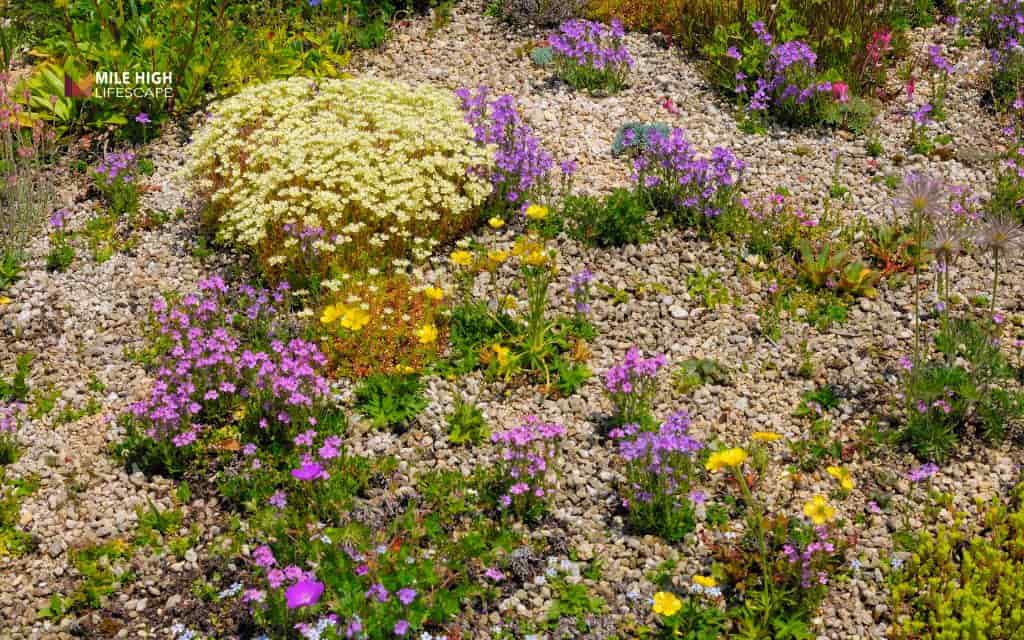
13. Front yard statement bed
Design eye-catching focal points using dramatic rock arrangements and specimen plants. Create maximum curb appeal with artistic boulder placement and colorful accent plants that showcase your home’s best features.
See related: Front yard rock and mulch landscape pictures: 17 stunning Denver ideas
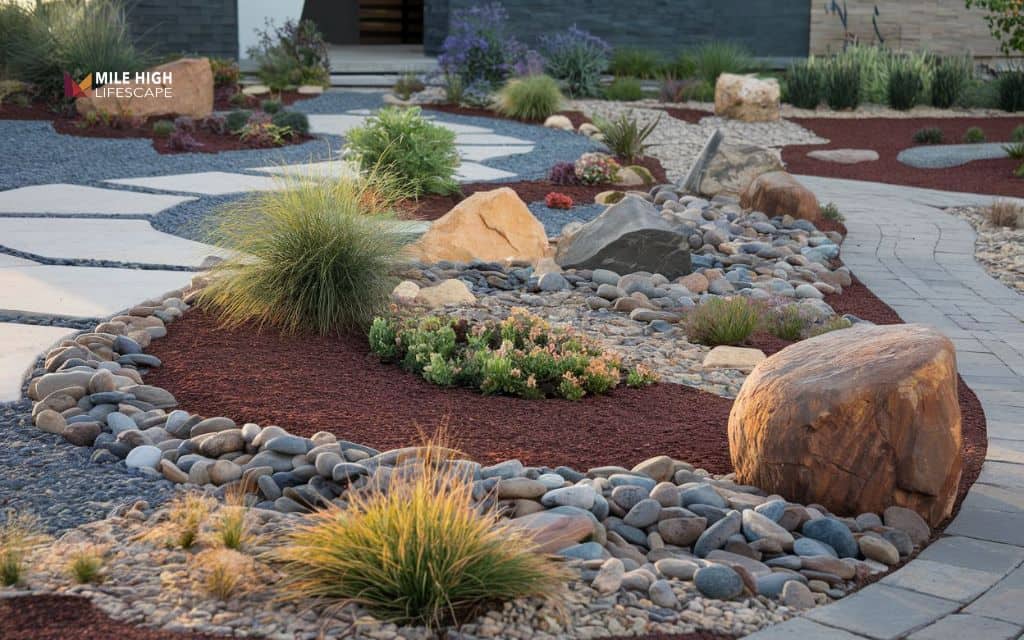
14. Container & rock fusion
Combine decorative pots with surrounding river pebbles for flexible design options. This approach allows for seasonal plant changes while maintaining permanent hardscape structure.
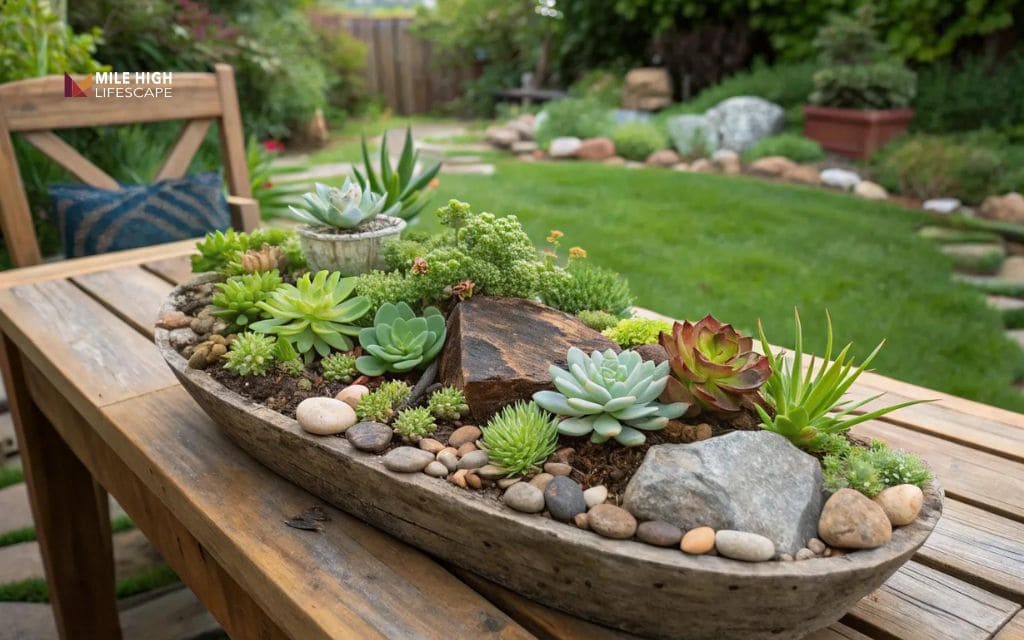
15. Backyard retreat rock bed
Surround seating areas or water features with river rocks to create serene outdoor living spaces. Use varied rock sizes and complementary plants to establish peaceful environments for relaxation and entertainment.
See related: 17+ inspiring and easy backyard rock landscaping ideas to refresh your garden design
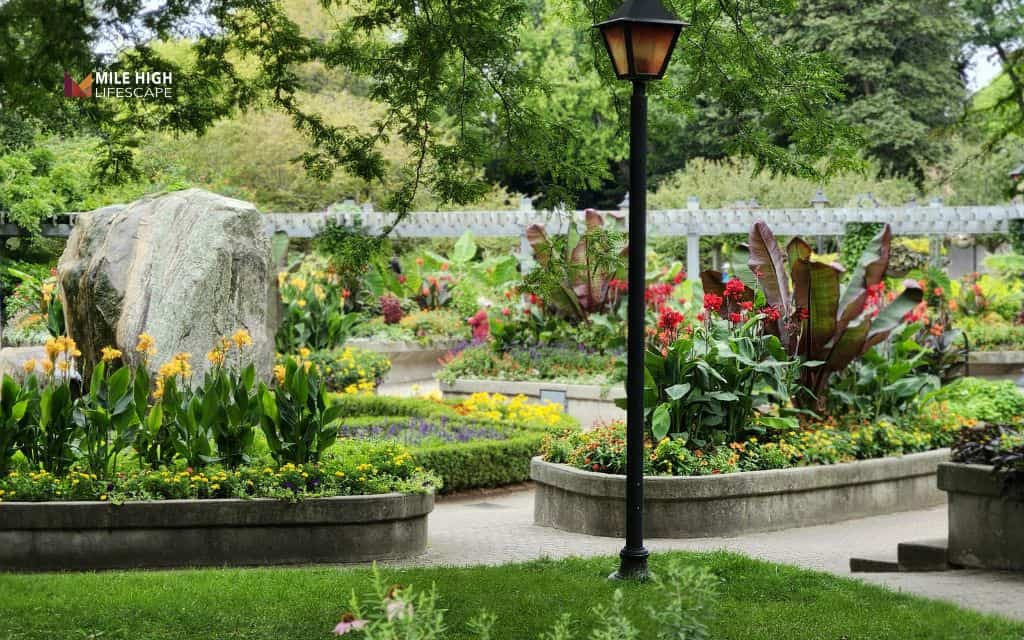
River rock vs. mulch – which is better for Denver landscapes?
| Feature | River Rock | Mulch |
| Longevity | 10-15 years | 1-2 years |
| Water Retention | Moderate | High |
| Weed Control | Excellent (with barrier) | Moderate |
| Upfront Cost | Higher | Lower |
| Annual Maintenance | Minimal | Significant |
| Wind Resistance | Excellent | Poor |
| Appearance | Permanent, consistent | Natural, changing |
River rock proves ideal for busy homeowners seeking durable, low-maintenance solutions that withstand challenging climate conditions while providing long-term value.
Best plants to pair with river rock in Denver
Selecting appropriate plants ensures your river rock flower beds thrive in Denver’s high-altitude, semi-arid environment. Focus on drought-tolerant species that complement stone textures while requiring minimal supplemental watering.
- Perennials: Black-eyed Susan (Rudbeckia), purple coneflower (Echinacea), and autumn sage (Salvia greggii) provide reliable color and attract beneficial wildlife.
- Ground Covers: Creeping thyme releases fragrance when walked upon, ice plant offers succulent texture, and various sedum species provide year-round interest with minimal water requirements.
- Ornamental Grasses: Blue fescue adds fine texture and movement with feather reed grass provides vertical interest and winter structure that looks stunning against river rock backgrounds.
- Shrubs: Juniper varieties offer evergreen structure, potentilla provides continuous summer blooms, and spirea adds seasonal flowering without excessive water needs.
- Succulents: Hens-and-chicks (Sempervivum) multiply naturally, yucca provides architectural drama, and cold-hardy agave species add southwestern flair while surviving Denver winters.
Group plants according to water requirements to prevent overwatering sensitive species while ensuring adequate moisture for those that need it, promoting overall drought resilience throughout your landscape.

Maintenance tips for long-lasting river rock flower beds
Proper maintenance ensures your river rock investment provides decades of beauty with minimal effort. Regular care prevents common problems.
- Use leaf blowers or rake lightly to remove accumulated debris, especially after Denver’s frequent windstorms and autumn leaf drop. Heavy raking can displace smaller rocks, so gentle techniques work best for routine cleaning.
- Check rock placement annually and re-level any stones displaced. This simple task maintains clean lines and prevents trip hazards along pathways and borders.
- Inspect weed barrier fabric each spring for tears or gaps that allow weed penetration.
- Avoid harsh chemical weed killers near native plants and beneficial insects. Spot-treat persistent weeds with targeted applications or remove them manually to protect the ecosystem you’ve created.
Conclusion
River rock flower beds represent smart, sustainable landscaping perfectly suited to Denver’s challenging climate and busy lifestyles. These 15 ideas provide inspiration for creating beautiful, low-maintenance gardens that conserve water, reduce annual costs, and enhance your property’s value for years to come.
Whether you’re refreshing existing flower beds or starting completely new landscape projects, river rocks offer versatility that complements any architectural style while supporting Colorado’s native plant communities and wildlife.
Ready to transform your outdoor space? Start planning your river rock flower bed project today, or contact Dever rock landscaping professionals like Mile High Lifescape who specialize in low-maintenance designs perfectly adapted to Colorado’s unique conditions.
Frequently asked questions (FAQs)
Do river rocks make soil too hot in summer?
River rocks can increase soil temperature in full sun locations, but this becomes problematic only without adequate shade plants. Add organic mulch directly under plant root zones for temperature moderation while maintaining rock aesthetics in open areas.
Can I mix mulch and river rock in the same bed?
Absolutely. Combining materials provides texture variation and allows you to optimize conditions for different plants. Use mulch around moisture-loving plants and rocks in drier areas for the best of both approaches.
How often should I replace river rock?
With proper installation and maintenance, quality river rocks last 10-15 years or longer. Replacement becomes necessary only when rocks become significantly displaced or if you decide to change your landscape design.
Is river rock safe for pets and children?
River rocks are generally safe, but avoid sharp-edged stones in areas where children or pets play frequently. Choose smooth, rounded stones for high-traffic areas and reserve angular rocks for decorative-only locations.
What size river rocks work best for flower beds?
Mix 1-3 inch river rocks for optimal texture variation and drainage performance. Smaller pebbles work well for pathways, while larger stones serve as accent pieces and focal points.
